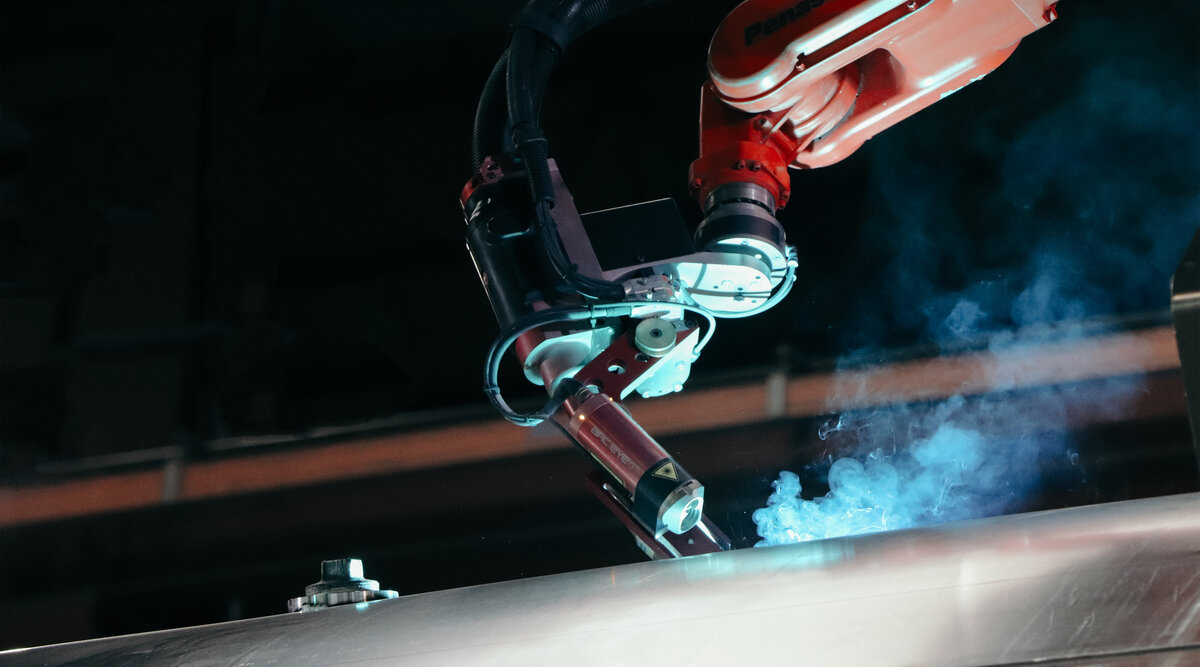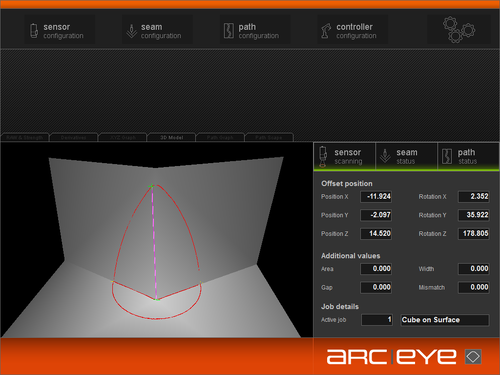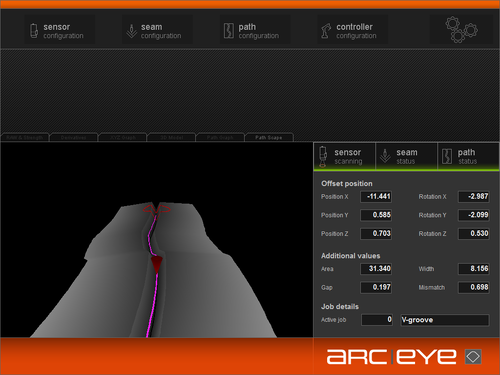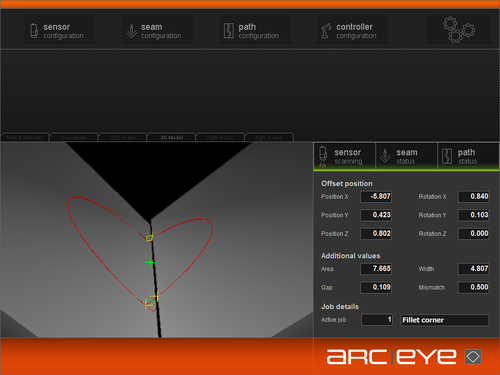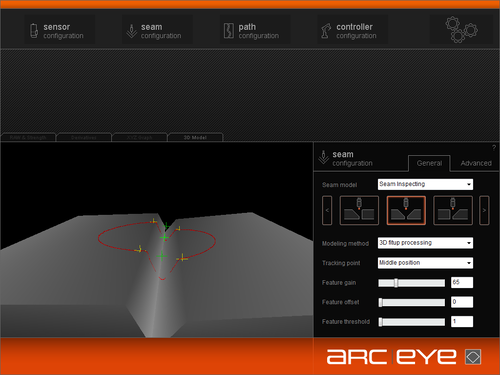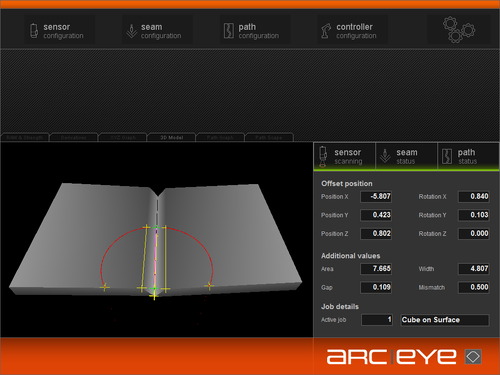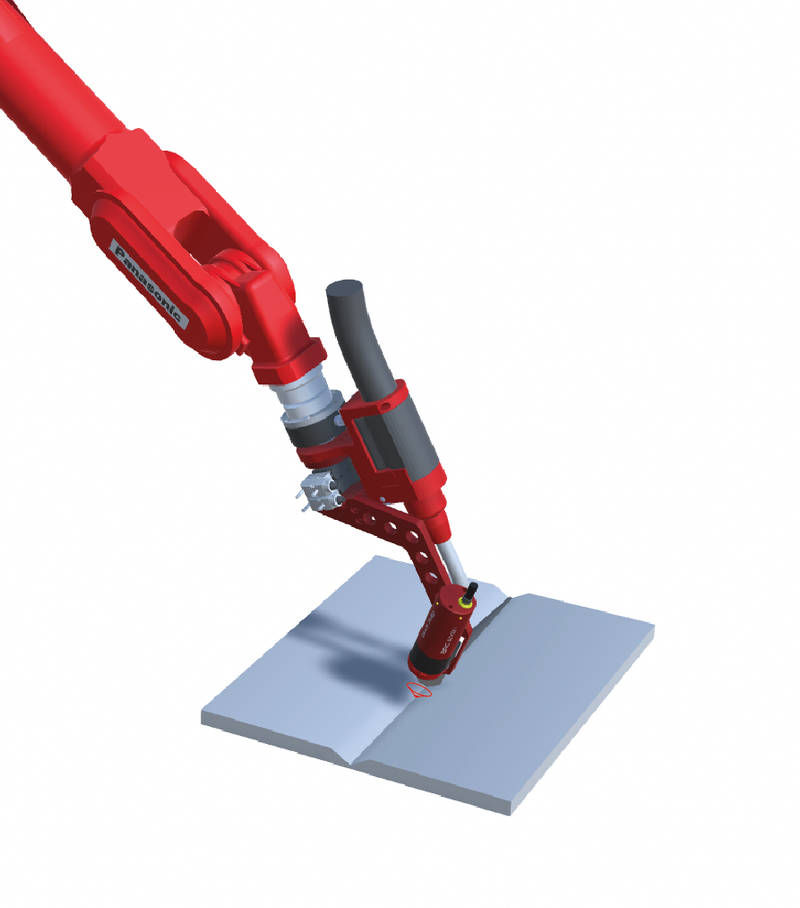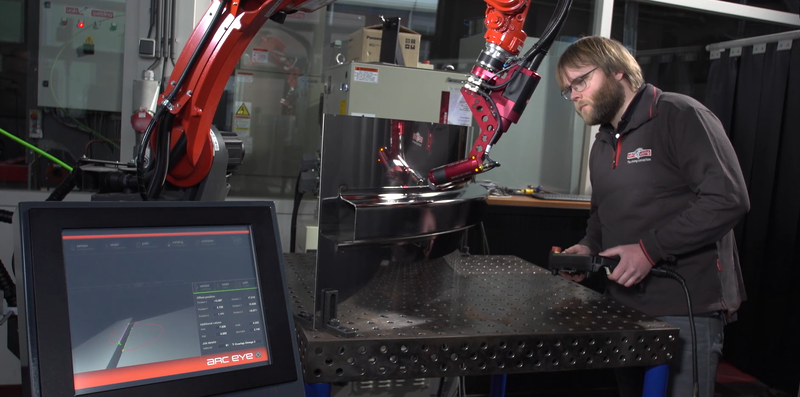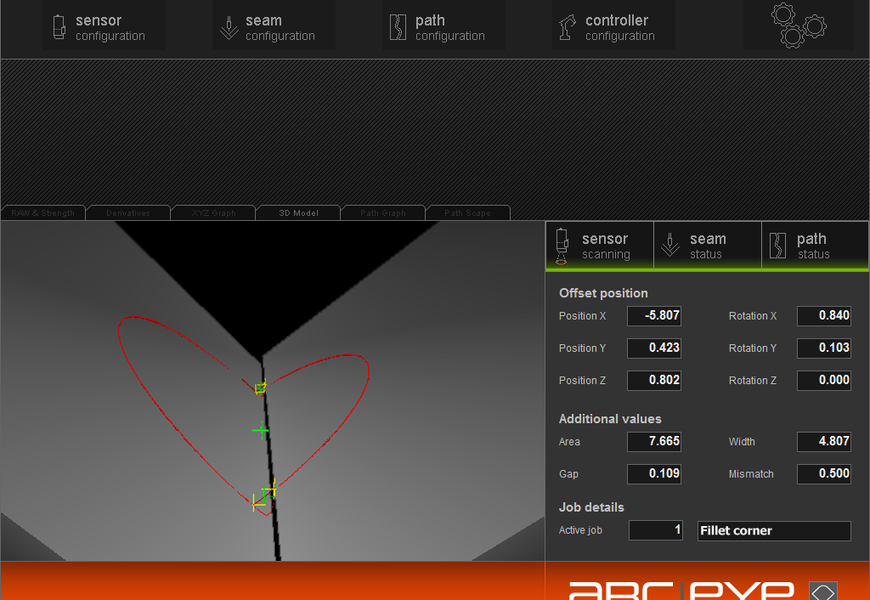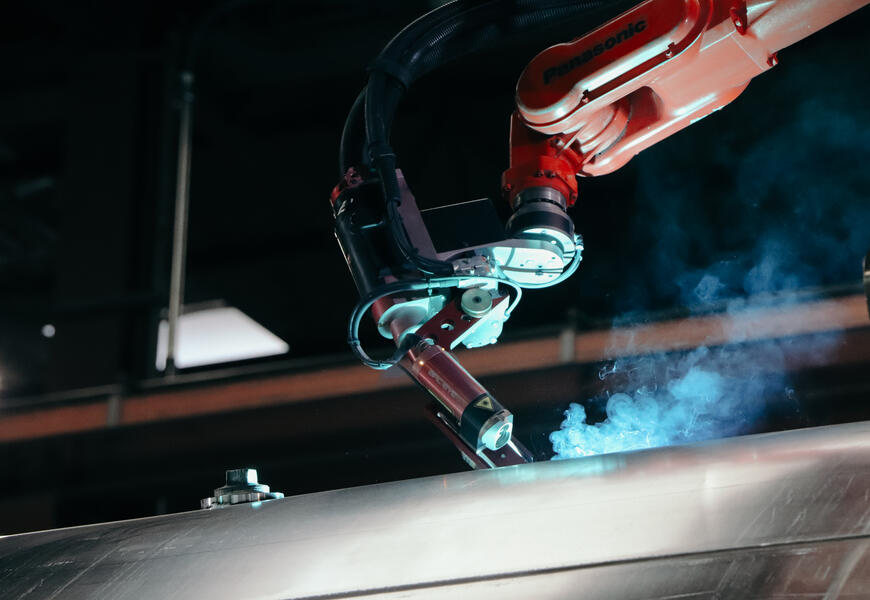Real-time seam tracking
"What we as humans are most aware of are images", begins Leijten. "As a small child, we see all kinds of things. We take them in and learn from them. With the ARC-EYE, this intelligence is in the software and the camera acts as an eye: it takes pictures." The software analyses this image and uses it to guide the welding robot during the welding process, providing a solution for welding materials where accurate seam tracking on the arc is difficult.
Unique circular concept
A unique feature of the ARC-EYE is its scanning method: the camera does not take a picture of a projected line, but takes pictures of a rotating laser 'spot' at high speed. Leijten explains the advantages: "Using a spot reduces both the surface that the laser covers and the total surface that is scanned. As a result, the camera detects fewer reflections that can interfere with the readings. Another advantage is that the laser power remains concentrated, allowing us to keep the required laser power low and safe." Reflections are particularly problematic for robot cameras when dealing with shiny materials such as aluminium and stainless steel, which Eric says is exactly where our ARC-EYE excels.

